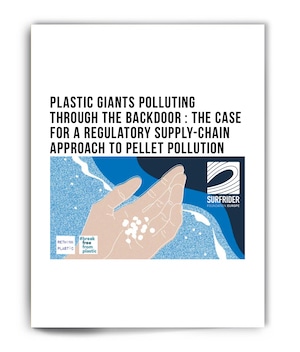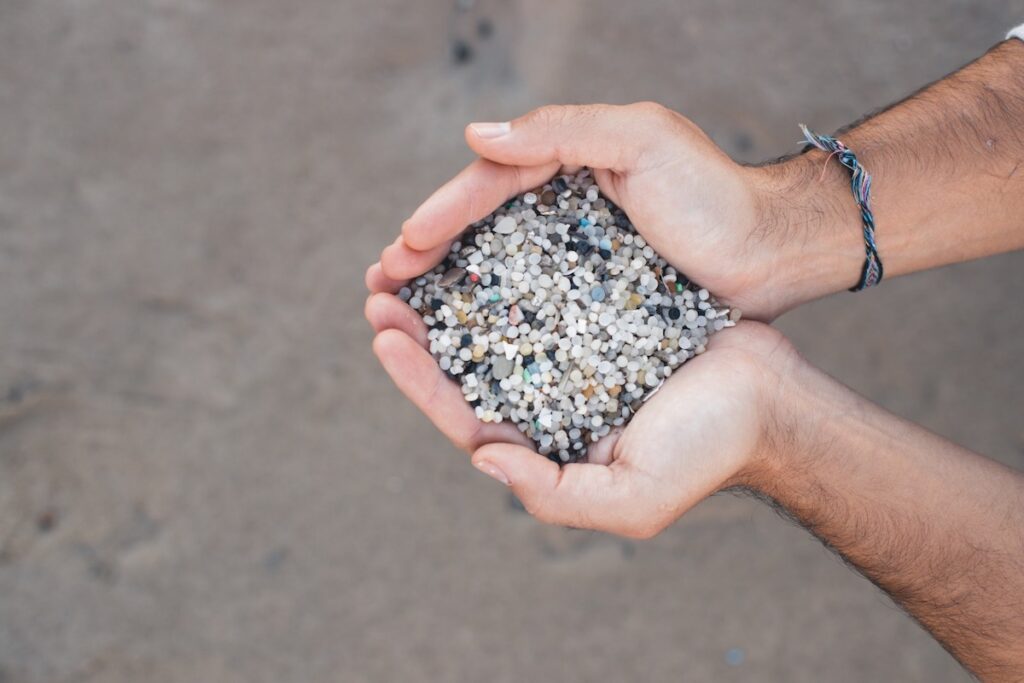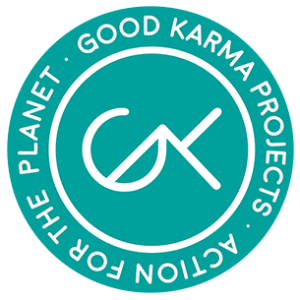Cada año 10 trillones de pellets de plástico acaban en el océano. Estos pellets son la materia prima que se usa para fabricar productos de plástico.
Los pellets de plástico, también conocidos como nurdles o lágrimas de sirena, son pequeñas esferas que se utilizan como materia prima en la fabricación de casi todos los artículos de plástico. Debido a su pequeño tamaño (normalmente menos de 5 mm) y a las malas prácticas, los pellets a menudo se “pierden” en todas las etapas de la cadena de producción y distribución del plástico (producción, transporte, reciclaje …).
Una contaminación con gran impacto
Según las estimaciones de un informe encargado por la Comisión Europea en 2018, la industria “pierde” cada año en la UE alrededor de 160.000 toneladas de pellets de plástico. A nivel mundial, más de 250.000 toneladas de gránulos de plástico terminan en entornos acuáticos cada año. La contaminación por pellets de plástico es, por tanto, la segunda fuente más importante de contaminación microplásticos primarios. Así lo confirma también el report ‘Breaking the plastic wave‘ de Pew Environment que estima en 10 trillones los pellets que cada año acaban en el océano.
Los pellets actúan como “esponjas” para tóxicos y bacterias presentes en el medio marino que se suman a los ya dañinos aditivos que contienen los pellets.
Una vez en la naturaleza, los pellets permanecen en el medio ambiente durante cientos de años, causando daños irreversibles a la biodiversidad y la vida, y a los hábitats marinos y terrestres. Los animales pueden tragarse los pellets, que confunden con huevos de pescado, obstruyendo sus estómagos y, a menudo, provocando su muerte. Los pellets también se rompen e ingresan gradualmente en la cadena alimentaria, lo que representa un riesgo potencial para la salud humana.
 Además, los pellets, como todos los demás plásticos, actúan como “esponjas” para tóxicos y bacterias presentes en el medio marino que se suman a los ya dañinos aditivos que contienen los pellets.
Además, los pellets, como todos los demás plásticos, actúan como “esponjas” para tóxicos y bacterias presentes en el medio marino que se suman a los ya dañinos aditivos que contienen los pellets.
El informe publicado por Surfrider Foundation Europe, en nombre de la alianza Rethink Plastic, destaca cinco casos recientes de contaminación industrial con pellets de plástico en diferentes países europeos: un derrame en el norte de Francia, un accidente en el Mar del Norte (que afectó a Noruega, Suecia y Dinamarca), y la contaminación continua de las plantas de producción y procesamiento de pellets en Tarragona (España), Amberes (Bélgica) y Rotterdam (Países Bajos).
El caso de Tarragona
Good Karma Projects lleva desde 2018 documentando e investigando la aparición de los pellets de plástico en las playas de Tarragona. Ahora a través de la colaboración con Surfrider Foundation Europe y su programa Coastal Defenders, se ha presentado el caso a las instituciones europeas para que adopten urgentemente medidas legales para regular las actividades de la cadena del plástico, y asegurar que toda la cadena ponga en marcha buenas prácticas para limitar y detener la contaminación por pellets.
La contaminación por pellets en la zona es recurrente y constante. En febrero de 2019 se estimo que podía haber hasta 90 millones de pellets en la playa de La Pineda.
Durante los últimos años se han observado diversos episodios en que gran cantidades de pellets han aparecido en las playas de la zona. A finales de 2018 hubo un gran vertido en la playa de La Pineda, posteriormente Good Karma Projects estimo una presencia de entre 30 y 90 millones de pellets en la playa, con una concentración de 500 a 3000 pellets por m2. En julio de 2019 también se denunció un gran vertido en la playa del Miracle, y al cabo de un mes aparecían pellets en la Playa Larga y l’Arrabassada. Durante las investigaciones también se encontró presencia de pellets en el mar.
Nuestras investigaciones son muy recientes pero múltiples personas nos han confirmado que hace 40 años ya se encontraban con estas bolitas de plástico en la playa. Lo que es más sorprendente es que estas mismas personas también afirman que es ahora cuando han conocido que estas bolitas son la materia prima para fabricar productos de plástico, y por tanto también han entendido su procedencia. – Jordi Oliva, co-fundador de Good Karma Projects
La contaminación por pellets en la zona es recurrente y los pellets que se encuentran son de diferentes colores y formas, como consecuencia de diferentes vertidos y continuas pérdidas por parte de las empresas situadas en el Polígono Petroquímico y el puerto de Tarragona. De hecho, Tarragona y Barcelona concentran el sobre el 70% de la industria productora de plástico de España. Según datos de la Asociación Empresarial Química de Tarragona en 2017 se producieron 19,3 toneladas métricas de plástico en Tarragona.
La contaminación expuesta aquí es el resultado de una recopilación de datos reciente. Sin embargo, fuentes confirman que estos derrames no son nuevos y han estado ocurriendo desde que las petroquímicas llegaron a la zona hace 50 años. Desde entonces, no se ha responsabilizado a ninguna empresa de los vertidos que han afectado de forma continua y repetida al área de Tarragona y que muy probablemente se han extendido a la región mediterránea llegando a zonas circundantes e impactando puntos críticos de biodiversidad excepcionales como Baleares y el Delta del Ebro. Si bien los responsables de estos episodios de contaminación siguen sin salir a la luz, y a pesar de que las empresas de la zona comunican que cumplen con las medidas preventivas para evitar que esto suceda, continuan ocurriendo casos recurrentes de contaminación por pellets a expensas del medio ambiente.
¿Qué se puede hacer?
Durante los últimos 30 años, algunos actores de la industria han estado tratando de abordar el problema promoviendo una serie de buenas prácticas a través de la iniciativa llamada “Operation Clean Sweep”. La iniciativa es voluntaria y no vinculante, y ha demostrado ser incapaz de actuar con eficacia, a la luz de los estudios expuestos en el informe.
Dada la magnitud de la contaminación y el daño irreversible que genera, junto a Surfrider Europe hacemos un llamamiento a las instituciones europeas para que adopten urgentemente medidas legales para regular las actividades de la cadena del plástico y asegurar que toda la cadena ponga en marcha buenas prácticas. para limitar y detener la contaminación por pellets.


